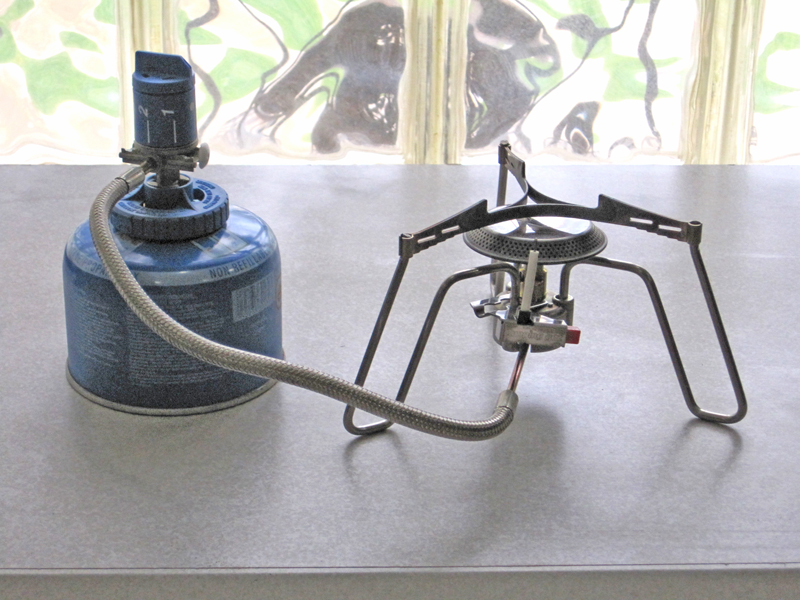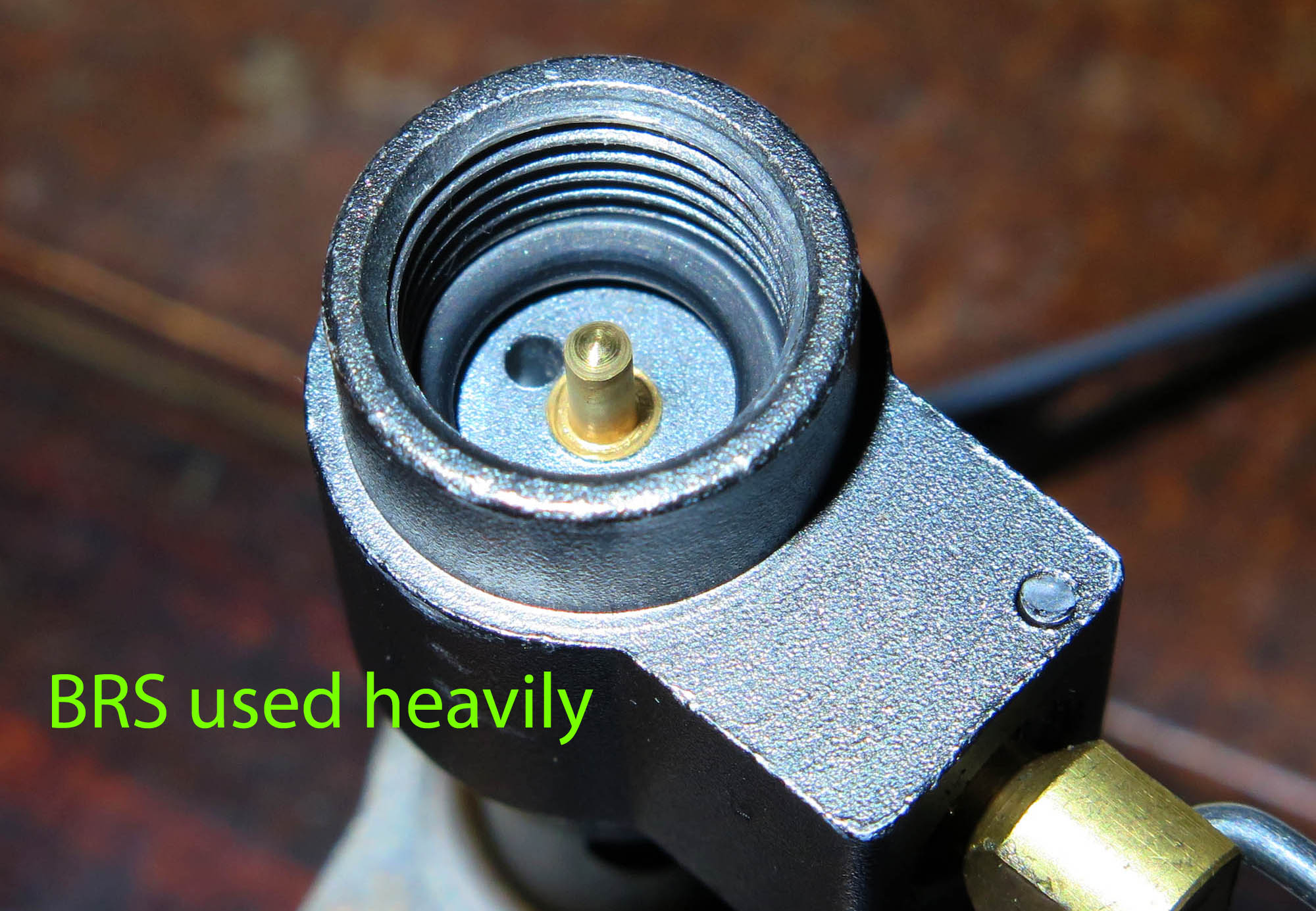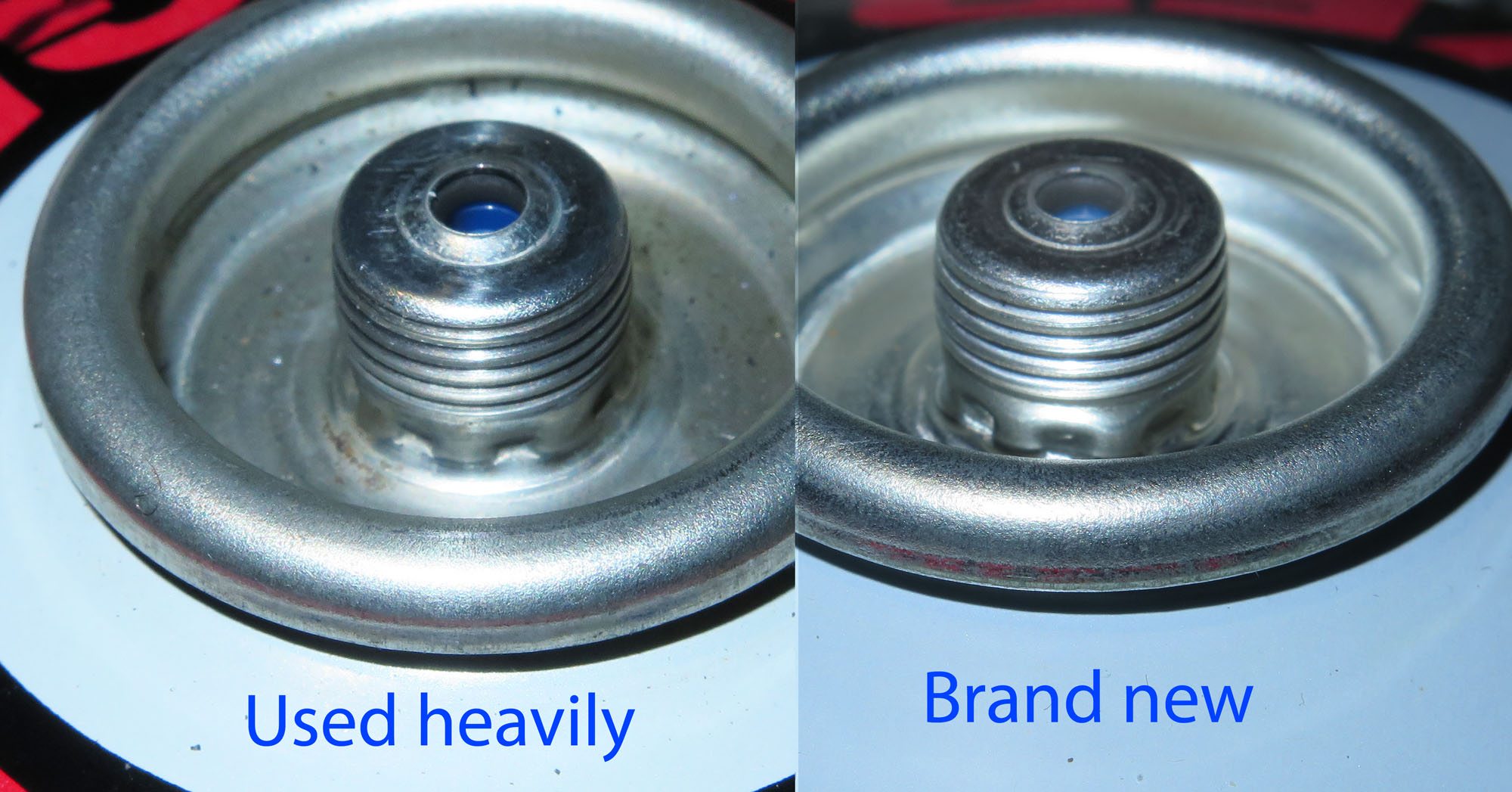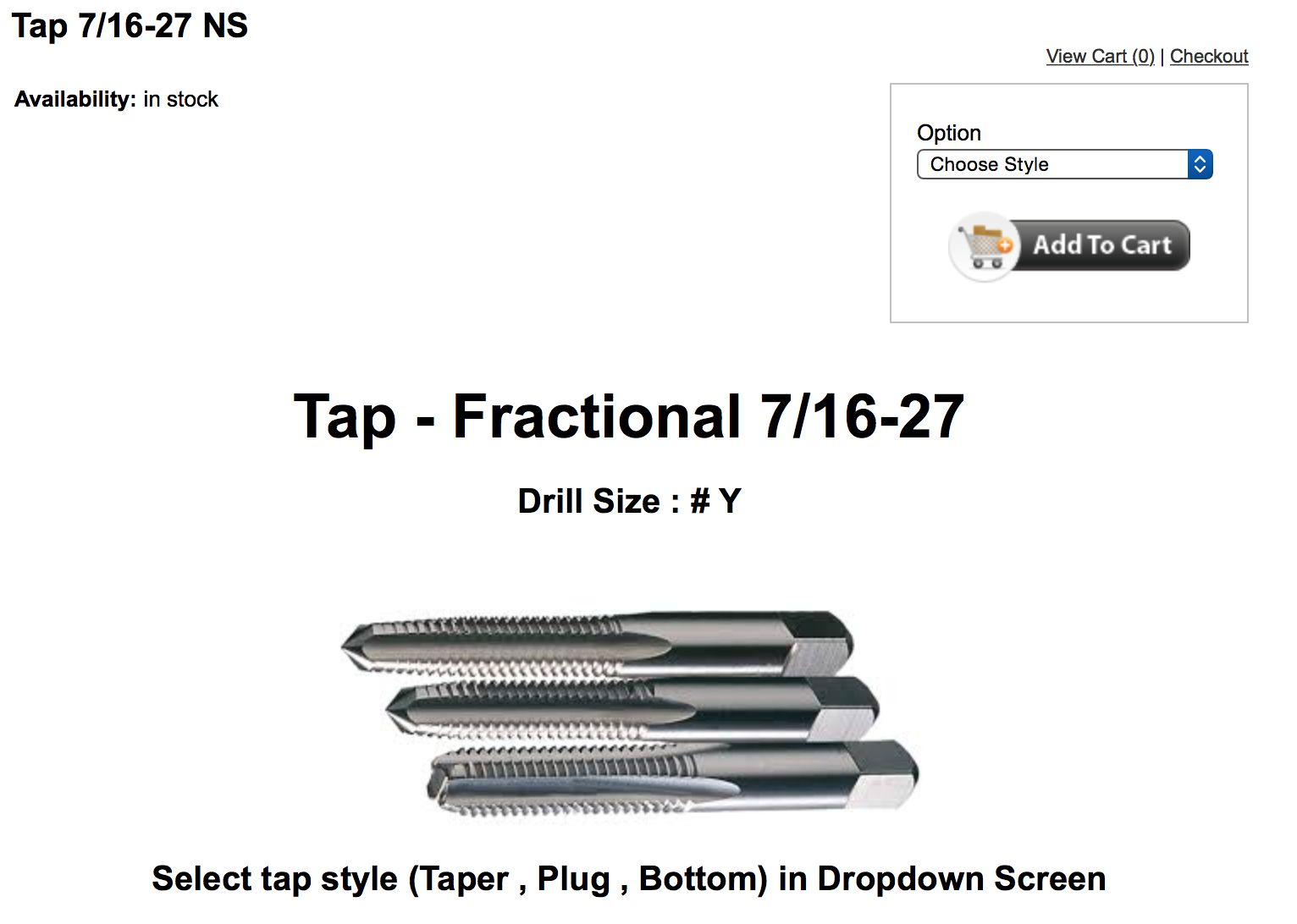Topic
BRS-3000T – Another One Bites the Dust
Forum Posting
A Membership is required to post in the forums. Login or become a member to post in the member forums!
Home › Forums › Gear Forums › Gear (General) › BRS-3000T – Another One Bites the Dust
- This topic has 94 replies, 23 voices, and was last updated 5 years, 3 months ago by
 Jon Fong / Flat Cat Gear.
Jon Fong / Flat Cat Gear.
-
AuthorPosts
-
Mar 12, 2017 at 2:53 pm #3456151
Hi Cameron
“Are you fussing too much?”
YES! Is that not the point of BPL?Chuckle! Point made. :)
Cheers
Mar 12, 2017 at 2:57 pm #3456152I agree about the threads, as I have read of failures here on BPL. The only other canister stove I have owned (and still own) is a Snow Peak Gigapower with fairly bombproof brass threads.
Mar 12, 2017 at 3:26 pm #3456160They are not bombproof. The disgracefully half-formed steel threads on the canisters can wreck brass as well. Yes, I do have personal experience here!

Snow Peak Gigapower with fairly bombproof brass threads.
This happened to me in the middle of a 2-month walk. I had to replace the stove that day.Cheers
Mar 12, 2017 at 6:08 pm #3456200Brad,
With respect to the BRS-3000T: It sounds like you’ve got a good one. I’d continue use your BRS-3000T on day trips and such and see how it does, but I think you’re good to go with the one you’ve got.
With respect to the WindMaster: Apparently they were blowing them out the door over at Camp Saver. They were marked down $15 off MSRP and are now sold out. They have the Amicus which is a nice stove but has no regulator valve and is 75 g without piezo and 80 g with. That’s roughly three BRS-3000T’s. Hard to recoup 50 g (roughly half a small sized canister) in fuel efficiency. The Amicus is a (very) nice stove, but it will not be your best UL option.
Gossamer Gear has the WindMaster for sale for $65 which is a pretty good price.
HJ
Mar 12, 2017 at 11:32 pm #3456265They are not bombproof. The disgracefully half-formed steel threads on the canisters can wreck brass as well. Yes, I do have personal experience here!
In this case, don’t condemn the stove. That would fall under the category of user error ;-)
Mar 13, 2017 at 12:37 am #3456276Hi Nick
Actually, I file it under a disgraceful decision by EpiGas way back when they designed the screw-thread canister. It was THEIR crappy design.
The French could see the problem immediately, and countered with the Campingaz Qwik-Clik design, which is enormously superior in reliability. Coleman faked past the EpiGas patents with the Powermax design, which works well but is more difficult to make.
Unfortunately, neither Campingaz nor Coleman pushed their better designs, so screw-thread won the day. Sad. A bit like the appalling x86 design.
You might note that my Winter Stove connector design derives from the Campingaz design – for very good reason.
Cheers
Mar 13, 2017 at 1:31 am #3456280Actually, I file it under a disgraceful decision by EpiGas way back when they designed the screw-thread canister. It was THEIR crappy design.
No disagreement here. Remember I was an auto mechanic and have assembled hundreds of thousands of fasteners over the years and am in the habit of looking at threads before I screw things together. Short small threads are a recipe for disaster. Short small aluminum threads are worse, which is why I hate canister stoves with aluminum threads. I bought a Snow Peak LiteMax stove years ago and gave it away after I saw it had aluminum threads. I have a WindPro II, which looks like the canister attachment is anodized aluminum, which should be slightly better, but for longish winter trips where stove reliability is critical I still bring a liquid stove because I am not 100% confident in the WindPro’s threads.
Unfortunately, neither Campingaz nor Coleman pushed their better designs, so screw-thread won the day.
I know.
BTW, I still have this stove (and a bunch of canisters) that I used to use with a MSR WhisperLite windscreen. Too bad the fuel tube goes under the burner, although it is a fairly heavy stove at around 14 ounces.
 Mar 13, 2017 at 7:14 am #3456302
Mar 13, 2017 at 7:14 am #3456302As a point of reference — but with the huge caveat that I don’t keep records… so admittedly not very scientific — I offer up a couple of observations with both a BRS and canister combo that have been used a lot over the past couple of winters for both testing and field use as I mentioned earlier.
The reason I say stove/canister combo is because I have been refilling the same canister and using it with this stove in order to get a rough idea about the long-term durability of a Lindal valve and canister threads when it is used a lot.
What is “a lot”??? Well, it is no exaggeration to say that this stove and canister have been assembled and disassembled a few hundred times during my stove tests, and the canister has seen even more use because I have either refilled it or topped it off several dozen times with my cheap butane fuel cartridges using my fuel transfer gizmo.
Per Nick, I am very, very careful with threads of any kind, going back to my bicycle wrenching days and my other hobby, radio controlled model airplanes, where a $150 servo could be ruined instantly if cross threaded or over-tightened. So while this stove/canister combo have seen a huge amount of use, they have seen virtually no abuse.
As you can see from the photos, the threads are still in very good shape, both for the stove and the canister. Although the photo of the canister threads makes them look rather rounded (flat light from the flash), they are in fact still in very good shape, so I included the photo of a brand new canister for comparison.

 Mar 13, 2017 at 7:50 am #3456305
Mar 13, 2017 at 7:50 am #3456305“and have assembled hundreds of thousands of fasteners over the years and am in the habit of looking at threads before I screw things together”
any self respecting mechanical person would be embarrassed to strip a thread : )
I think it’s a manufacturing problem so you have to check the threads before using the first time. You have to feel it as you screw it on and if there’s a problem, back off and examine. You could even try running the stove for a moment – the mechanical clearances can be off and the stove won’t properly open the Lindal valve. And verify the valve seals when you remove the stove.
Now, because of Bob, I re-use the same canister so I’m good. I’ve dropped a canister and dented it so I just threw it away once.
Mar 13, 2017 at 9:05 am #3456327I screw the canister to the stove like this: in one hand I hold the stove in an upright position, and with the other hand I bring the canister up to the stove and engage the threads. I push up on the center of the canister bottom with my thumb and then spin the canister using my fingertips. I started screwing the two together upright like this because my BRS opens the valve before the o-ring seals – upright I lose a tiny bit of gas, but if inverted liquid fuel sprays out. Anyway, I’ve realized that this approach also works well to keep the threads aligned and it limits the amount of torque I can apply so I think I’m less likely to start the threads wrong and I can feel any grittiness in the threads. FWIW.
Mar 13, 2017 at 1:28 pm #3456378Fwiiw, I think limiting the amount of torque applied is the key thing. My stove had been in very active use for >5 years and I was not being careful enough. I had to do the stove up a bit tightly with some canisters to get gas out.
Cheers
Mar 14, 2017 at 8:34 pm #3456758Fwiiw, I think limiting the amount of torque applied is the key thing. My stove had been in very active use for >5 years and I was not being careful enough. I had to do the stove up a bit tightly with some canisters to get gas out.
Yep, which is why I always required my technicians to use a torque wrench on fasteners such as wheel lug nuts.
Mar 14, 2017 at 8:55 pm #3456764you strip threads when you start screwing on, don’t line up the threads correctly, it doesn’t feel right but you keep screwing anyway, then the thread strips
you have to feel that the threads are lining up at the beginning
it helps if you strip the threads a time or two, then have an emotional “oh shit” moment which programs your memory good, then in the future just before you strip the threads you recall that memory and stop
I may be wrong, but the torque required to strip a thread is less than the torque you want to tighten it to
Mar 14, 2017 at 9:08 pm #3456774Well, hopefully there is less need for screwing on a canister with excessive force just to engage the pin. We, sort of by default, have arrived at a de facto standard with major brands of canisters. Why? Simply because they’re just about all made in Korea by either Taeyang Industrial or Max Sun – with the majority coming from Taeyang Industrial. The two Korean canister manufacturers make canisters for all of the major brands I’m aware of except Coleman, at least anything I’ve seen in the last few years in the US. MSR used to have a different provider as did Snow Peak, but they too have gone over to the Korean canister mega-companies.
See also:
Can I Use Any Brand of Canister?So the good news is that canisters are standardized. The bad news is that if Kim Jong Il ever starts a war, canisters will be really hard to come by. Why, yes, as it happens, I do have some extra white gas stoves. I suppose you’ll be wanting one, will you? Well, for you, I have a special deal… ;)
lol
HJ
Mar 14, 2017 at 9:35 pm #3456783Jerry,
Repeated over-torquing of fasteners distorts the threads and weakens them. In the case of aluminum especially this distortion often causes the thread to separate from the surrounding metal, and most people think the threads have become “stripped” due to cross threading. So we’ll give Roger a “pass” and change the charge from user error to poor design :-)
Mar 14, 2017 at 9:49 pm #3456786oh, I can see what you mean
I have always stripped threads by cross threading right at the beginning. I guess that’s a little different. I have never stripped a stove onto canister threads.
Mar 14, 2017 at 10:41 pm #3456801Hi Nick, Jim and Jerry
Thank you for the ‘pass’.
Perhaps some explanations are in order. First of all, the whole issue is fully documented in my FAQ, at
http://bushwalkingnsw.org.au/clubsites/FAQ/FAQ_GasStoves.htm#Thread
The thread on a canister is a 7/16″ UNEF, where the EF means ‘extra fine’. The EF version at 28 tpi is not all that common, although it is used on the wireless ethernet RP-TNC connectors. The UNF is 24 tpi.The problem I had at the start of my search was that while 7/16″ = 0.437″, the OD of the thread on the canister is about 0.415″ – some 0.022″ smaller. It did not match anything. The reason the canister thread is undersize relative to the 7/216″ UNEF spec is because the thread is rolled into the very thin sheet metal making up the Lindal valve: you can’t make the thread any deeper without damaging the metal. So we start with a thread which is missing the top half of the profile. It only engages the tips of the brass thread.
Since the thread has been rolled, the corners of each steel bit sticking up tends to be rather sharp. Now you have sharp steel corners biting into common machining brass, which is not all that hard. Couple that with the variability you find in the depth of the contact point in the Lindal valve in some brands of canisters, and you find that sometimes you need to screw the stove on a bit harder just to get the gas out. No, this is not a crossed thread! The end result is that the tips of the brass thread slowly get sheared off, leaving the lower half of the thread sitting there. You can see this in the photo I posted. It’s a GST-100 stove, and Snow Peak were a bit embarrassed by it.
EpiGas made the decision way back to use a half-formed steel thread on the canister to couple to a brass thread on the stove. It was a poor decision – but doubtless it was cheap.
Cheers
Mar 15, 2017 at 1:49 am #3456828Roger,
Your posts have peaked my interest. I read your link to the bushwalking site and was surprised at the Lindal spec for 7/16″ NS.
NS is the old National Special designation. I have a couple of NS taps and dies, but they are 1″ and larger. I went to the Lindal site and they still state the thread size is 7/16″ NS, as is the PDF file they link to.
So I am thinking maybe that is the size they are using. So what is 7/16″ NS? I suspect it might actually be 27 TPI, but unlike National Pipe Thread (NPT) that have tapered threads, the Lindal spec might be for a straight thread, as a tapered thread isn’t needed to depress the valve and the thread of the canister is very short. I measured a canister and a stove with a thread gauge and both 28 TPI and 27 TPI seem to match — unfortunately there aren’t enough threads to get a good measurement — would need a piece to stock thread at least an inch long.
Is it possible that the Lindal is actually 27 TPI and the stove manufacturers are using 7/16″ extra fine (28 TPI) because it is a common size?
I can envision an engineer specifying 27 TPI because smaller gas lines, usually up to 1/8″ use 27 TPI, plus 7/16″ is not a size fitting you can find in a hardware store, and would discourage stove owners from fabricating fittings.
And I can envision the first stove manufacturer going with 28 TPI and every other stove manufacturer just copying it. If this is the case, can you imagine the liability and recalls ;-)
I did find this tap online (http://www.tapsndies.com/tap/tap-7-16-27.html). Might be an interesting experiment for someone like you to machine a stove connection with 7/16-27 threads. I don’t have the machinery to fabricate a piece of brass or aluminum stock to attach to a canister.
 Mar 15, 2017 at 2:32 am #3456829
Mar 15, 2017 at 2:32 am #3456829Hi Nick
Yes, the old NS designation has been superceded – and expanded to include both Fine and Extra Fine.
No, I am reasonably certain the screw-thread is not 27 tpi. I have commercial 7/16″ UNEF taps and die, and I have made up test gauges with them for checking. The fit with 28 tpi is just too good.
I admit I have not actually tried 27 tpi. I could make up both male and female versions (on the CNC) and test them in a canister and in a stove, but my experience with correctly fitting and slightly wrong threads is such that I have never bothered.
To explain just a little more: with the CNC I can make ANY thread I want. 27.38 tpi? No problems. (7/16″ – 0.008″)? No problems. But when setting up a CNC for threading, you normally have to calibrate the tip you are using, so one spends a a bit of time fine-tuning the system. You get too ‘know’ what feels right. And I use my bought taps & dies as my masters.
I use e-taps a lot. The guy is in America, but he buys most of his parts from his family in (I think) Poland, where his family has CNC machines for making taps and dies. He only does HSS, not carbide. Polish engineering is quite good.
Cheers
Mar 15, 2017 at 9:56 am #3456866Interesting information – only on BPL – and bushwalkingnsw
I like the information on bushwalkingnsw,org.au – meshes with your bpl articles – if either site would disappear for any reason we have a backup
Mar 15, 2017 at 3:34 pm #3456957HJ wrote: So the good news is that canisters are standardized. The bad news is that if Kim Jong Il ever starts a war, canisters will be really hard to come by. Why, yes, as it happens, I do have some extra white gas stoves. I suppose you’ll be wanting one, will you? Well, for you, I have a special deal… ;)
Not to be morose, but I’ve also had the same thought regarding my WG stoves… keep a couple around along with a couple of gallons of fuel just for the Zombie Apocalypse, lol. The XGK also runs on kerosene with the proper jet, although that is some nasty stuff. Burns considerably hotter than Naphtha… kinda scary, actually.
I figure I can also make a fortune by teaching my neighbors how to build and start a wood fire. Of course there won’t be anything to spend said fortune on, so I’m still working out the details on that.
Mar 17, 2017 at 7:12 pm #3457513Take your payment in .22 Long Rifle cartridges. It will be the new currency.
Mar 19, 2017 at 11:51 pm #3458054Roger,
I contacted the Lindal Group and they confirmed the pitch is 28 TPI.
Mar 20, 2017 at 12:45 am #3458059Hi Nick
Thanks. Thinking back, I believe I did check that with the Lindal Group a decade ago when they sent me some uncrimped samples. But, confirmation is always good to have.
Cheers
Mar 20, 2017 at 2:49 pm #3458160“A bit like the appalling x86 design.”
I had to laugh with you at that one. I have discovered that the better design is typically the less successful one, in terms of sales. My theory is that the better design used more of their budget for design and engineering and had less left for marketing. The other design spent far more on marketing. And marketing is what sells products, not good design and engineering.
-
AuthorPosts
- You must be logged in to reply to this topic.
Forum Posting
A Membership is required to post in the forums. Login or become a member to post in the member forums!
Trail Days Online! 2025 is this week:
Thursday, February 27 through Saturday, March 1 - Registration is Free.
Our Community Posts are Moderated
Backpacking Light community posts are moderated and here to foster helpful and positive discussions about lightweight backpacking. Please be mindful of our values and boundaries and review our Community Guidelines prior to posting.
Get the Newsletter
Gear Research & Discovery Tools
- Browse our curated Gear Shop
- See the latest Gear Deals and Sales
- Our Recommendations
- Search for Gear on Sale with the Gear Finder
- Used Gear Swap
- Member Gear Reviews and BPL Gear Review Articles
- Browse by Gear Type or Brand.








